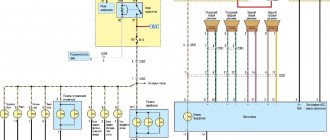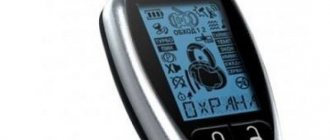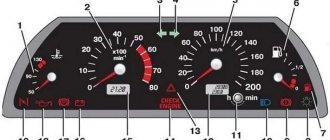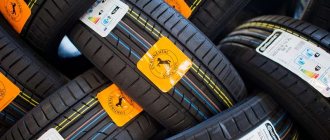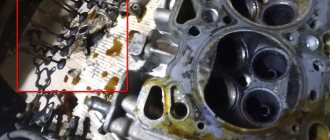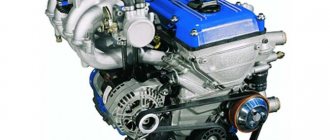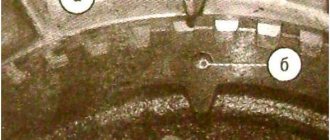Hello, dear readers! You probably know that springs play a huge role in the suspension system of any vehicle and perform several functions. If you choose them correctly, the car will be easier to drive, its load capacity will increase, you will be able to comfortably overcome road irregularities, etc. At the same time, many are confused by the marks on the springs.
Not everyone understands what these traces of paint mean, what they are like and why they differ from each other in color.
Someone will confidently say that in this way the manufacturer classifies the springs by stiffness and the color largely reflects the characteristics of the product. And they will be absolutely right.
I propose to understand in detail what these color markings are, why they are colored and how they differ from each other. If you have anything to add, be sure to write in the comments. Perhaps I will miss some important points.
Main varieties
Before we begin to consider the types of springs for cars, let’s briefly remember why they are needed. When moving over uneven surfaces, the car should remain soft. Otherwise, the trip will be no different from traveling by cart. To ensure comfort, automakers equip vehicles with suspension.
In fact, comfort when using the suspension is an added bonus. The primary purpose of springs in a car is transport safety. When a wheel hits an obstacle at speed, such as a bump, the shock absorber softens the impact. However, to prevent the car from losing traction with the road surface, the wheel must be quickly returned to a hard surface.
More details about why a car needs springs are described in this video:
What are car springs used for?
Springs are needed for this purpose. But if only they are used in vehicles, even a small bump at speed will cause the car to sway violently, which will also lead to loss of traction. For this reason, springs in modern vehicles are used in conjunction with shock absorbers.
The classification of all springs for cars is as follows:
- Standard. Such an automobile element is installed by the manufacturer when assembling the model on the conveyor. This variety corresponds to the technical characteristics specified in the technical documentation of the machine.
- Strengthened version. These springs are stiffer than the factory counterpart. This type is perfect for vehicles used in rural areas, since the springs in this case will experience more load. Also, such modifications are equipped with cars that often transport cargo and tow a trailer.
- Increasing spring. In addition to increased ground clearance, such springs increase the vehicle's load-carrying capacity.
- Lowering springs. This type is usually used by sports driving enthusiasts. A lowered car has a center of gravity closer to the road, which increases aerodynamics.
Despite the fact that each modification has its own differences, they are all manufactured using special technology.
Manufacturing Features
Most machine parts are manufactured using a specific technology, so they comply with standards. However, in the case of spring production there is a slight subtlety. The manufacturing process of a part can involve operations that are often difficult to control.
For this reason, companies involved in the mass production of car springs cannot create identical parts. After leaving the assembly line, each spare part from this category is tested for rigidity. After comparing with the standard, specialists apply special marks to the products. Marking allows you to classify each product into groups, which are mentioned a little higher.
Headrest with monitor: comfortable travel for rear passengers
The production of springs for cars involves various technologically complex operations. Not all of them can be controlled. Some of them are even impossible to follow directly until the result is obtained in the form of a finished spring for a vehicle suspension.
Thus, a classification by color arose. This is one of the few ways to distinguish elements of different stiffness indicators after their manufacture has been completed. Yes, there are alternative methods, but color is considered the most simple, reliable and informative.
Why is color coding required?
The mark placed on the product will help the motorist select a modification that meets his needs. If you install springs of different stiffnesses on a car, the body will not be parallel to the road. In addition to the unaesthetic appearance, this is fraught with instability during driving - one part of the car will be depreciated in a mode different from the other side of the vehicle.
The same applies to the height of the products. In this case, of course, the size of the parts is often compared. To speed up the process of sorting products, manufacturers apply a color mark to all products that corresponds to specific technical characteristics.
Interesting
Very often, class A and B markings are also called hardness markings. Indeed, if you need to regularly travel with a full load, then it is better to use class A, as they can withstand a slightly larger load. However, this difference is small and amounts to approximately 25 kg.
Manufacturers do not always apply markings in accordance with the requirements of current standards. However, the color marking of the spring, assigning it to a certain class, must be applied. Moreover, it must be the same on both springs purchased, matching each other in color. If there is no such color marking, then it is better to refrain from purchasing them.
Differences between springs depending on their markings
If the paint designation indicates the rigidity of the part, and this parameter may vary depending on what raw materials the manufacturer uses, then the diameter of the threads must exactly correspond to the requirements of the automaker. Everything else remains at the discretion of the company fulfilling the order for the production of these products.
At the factory they can:
- Use blanks of different diameters. Automakers also allow the creation of springs with varying diameters within acceptable limits. For example, the initial turns may be thinner than the main turns.
- Change the height of the springs, as well as create parts that are identical in size, but have a different stiffness parameter.
- Change the number of turns and the distance between them, while taking into account the outer diameter required by the automaker. Regardless of the interturn distance, the element can be either soft or hard.
